|
Look around your workspace. What are some of the items you might have on display? A picture of family or friends, a souvenir from your last work trip, a calendar, coffee mug, some inspirational quotes, maybe a post-it note with an important phone number? These are just some of the common items that many of us have all over our work spaces, whether we work in a cubicle, "pod," or office. With so much time being spent in these work spaces, they have begun to take on the look and feel of an extension of our home. Some of us even spend a lot of time trying to curate a certain look - something that will be pleasing to not only ourselves, but those around us.
As Catholics who consider faith to be an important part of our lives (whether you're working in service to the faith or not), we might find some additional items carefully displayed in our workspace, such as a crucifix, rosary, prayer card, Bible, saint figurine, flag, lapel pin, etc. These are just a few items that would "give yourself away" as someone who might be a person of faith, specifically a Catholic. At my desk, I have a collection of busts/statues. They are a portion of my overall collection that includes historical figures. I used to display all of them at work, but when I changed jobs and ended up with a smaller workspace, I decided to be choosy about who got the spotlight in my Catholic “squad.” All popes, the busts include Francis, Benedict XVI, John Paul II, John XXIII, and Paul VI. They sit neatly next to each other, inviting queries from onlookers and co-workers. When I started my new job, my collection became a conversation piece. As I approached my one-year anniversary at work, I started to reflect on the different interactions I've been able to have because of these figurines’ stoic presence. I'm sure many of us who display any kind of religious or Catholic paraphernalia in our workspace have experienced these interactions. "What do you think about X?" "How do you feel about Y?" "Can you explain to me Z?" Questions can range from who can be a Godparent and why Catholics have a Marian devotion to the difference between a bishop and a cardinal. Of course, because of the recent struggles our Church has been facing, I have also become the person who fields uncomfortable questions and sometimes listen to venting. Choosing to publicly and visually identify as a Catholic is a good thing, but it also comes with its own challenges. I see it as a moment of evangelization. Pope Francis addressed the Bishops of the Episcopal Conference of East Timor during their "Ad Limina" visit in March 2014, saying that everyone is an "active" agent of evangelization. These are words we should all take to heart. By displaying religious items at our workplace, we are opening ourselves up to becoming agents of evangelization! This means we also have the responsibility to answer questions thoughtfully and sincerely. We have to be able to make sure we are giving the right answers or point people to the place where they can find the right answer. When giving our opinions, we have to be cognizant of where someone might be in their own faith journey and ready to provide more resources when asked. We also have to be ready to converse more when the time comes. The Catholic Apostolate Center can be your go-to resource for questions regarding the Catholic faith. With over 30 resources pages on many different topics, you can be sure that when you send someone to the website, the resources from the Vatican, USCCB, and other vetted Catholic sources will give the answers they might be looking for and the opportunity to ask more questions! So, I will leave you with 5 tips for being an active agent of evangelization at work:
Question for Reflection: What are some ways you can evangelize your family, friends, and colleagues? For more resources on becoming an active agent of evangelization, please click here.
0 Comments
10/24/2018 #Synod2018 Alive Among the Faithful: A Reflection on the Canonization Mass of October 14, 2018Read Now“We declare and define Blessed Paul VI, Oscar Arnulfo Romero Galdámez, Francis Spinelli, Vincent Romano, Mary Catherine Kasper, Nazaria Ignacia of Saint Teresa of Jesus March Mesa and Nunzio Sulprizio to be Saints and we enroll them among the Saints, decreeing that they are to be venerated as such by the whole Church.” -Holy Mass and Canonization of the Blesseds: Paul VI, Oscar Romero, Francesco Spinelli, Vicenzo Romano, Maria Caterina Kasper, Nazaria Ignazia di Santa Teresa di Gesu, Nunzio Sulprizio This was the moment I had waited months to experience: the official canonization of these seven men and women. This past May, I knew I would be studying in Rome for my fall semester of sophomore year. I wanted to know what, if anything, would be happening during my time in Rome. Little did I know that I would be blessed with attending a canonization Mass. I’ll say it again if you didn’t catch my excitement the first time: a CANONIZATION! But at this moment I know some of you are asking, “Tom, what is a canonization?” Well, I’m glad you asked, inquisitive reader. A canonization occurs when the Catholic Church formally recognizes that someone who has lived an exemplary life of holiness and virtue is now in heaven with God and can be prayed to and venerated in all the Catholic churches throughout the world. With this solemn declaration, they are added to the official canon, or list, of saints. The Catechism of the Catholic Church puts it this way: “by solemnly proclaiming that they practiced heroic virtue and lived in fidelity to God’s grace, the Church recognizes the power of the Spirit of holiness within her and sustains the hope of believers by proposing the saints to them as models and intercessors.” The next question you probably have is, “Tom, you said you waited months for the canonization Mass. Why were you so excited?” Dear reader, what a wonderful question! The answer is that I love the saints and want to grow in my relationship with as many of them as I can, in as many different ways as I can, because they are examples to all Catholics of how to live for Jesus Christ in this world. This canonization Mass was a once-in-a-lifetime way for me to exercise this desire. This is further illustrated by a beautiful and unintended consequence of my studying in Rome and attending the canonization Mass: I got to tangibly experience the saints. Let me explain. When I prayed at St. Peter’s tomb and later read the passage about how he walked on the water toward Jesus, I thought: “Woah, the Peter I’m reading about is the same Peter whose tomb I just prayed at.” When I prayed before the skull of the young Saint Agnes, I thought: “This is the skull of the patroness of my diocese. That’s amazing.” As my friends and I waited to enter St. Peter’s Square, we talked to a woman from El Salvador who listened to Oscar Romero’s homilies and was 19 years old when he was assassinated. She told us that when he was killed, she felt as if she had lost her own father. After she said this, I thought: “I have read about Oscar Romero’s life and sacrifice and how much he influenced the Salvadoran people, but I didn’t truly grasp it until I heard this story.” And that is the lesson: Catholicism isn’t dead—not even close. It is fully alive! It is an encounter with Jesus Christ through His saints who are alive among His faithful people here on earth! A final question you may have for me, and a question that I asked myself, is: “What lessons can we learn from these seven saints?” I believe we should emulate Pope Saint Paul VI’s fortitude for defending the truth of the Catholic faith, Archbishop Saint Oscar Romero’s passionate love for the poor and oppressed in our midst, Saint Francis Spinelli’s devotion to the Most Blessed Sacrament, Saint Vincent Romano’s zeal for the Word of God, Saint Mary Catherine Kasper’s “openness to the Holy Spirit,” Saint Nazaria Ignacia’s caring heart, and Saint Nunzio Sulprizio’s youthful devotion to the sufferings of Christ. I encourage you all to learn about these seven saints and as many saints as you can, and then to go tangibly experience them, however you can. Please click the following links for more resources on the canonization of Paul VI and Oscar Romero. On October 14, 2018, Pope Francis will canonize two great church leaders who helped shape Catholicism across the globe in the second half of the twentieth century: Pope Paul VI and Archbishop Oscar Romero. In reflecting on their lives, I cannot do justice to the complex and controversial circumstances that forged these extraordinary men into the saints they are. Instead, I’d like to reflect on something common and fundamental to us and them: Baptism. Baptism sets the foundation for a lifelong calling and mission. The Catechism calls Baptism “the basis of the whole Christian life” and “the gateway to life in the Spirit” (CCC 1213). A saint is someone who lives their baptismal identity to the full. The three fundamentals we are called to live and practice “on entering the People of God through faith and Baptism” (CCC 783) are what we call the “three offices of Christ”: Priest, Prophet, and King. What made Pope Paul VI and Archbishop Oscar Romero saints was the integrity and fullness with which they lived out their baptismal vocations as priest, prophet, and king. Priestly Vocation Both Pope Paul VI and Oscar Romero were ordained Catholic priests, but by virtue of their Baptism they shared what we call the “priesthood of the faithful.” What is this priestly vocation? We live it by offering prayer and sacrifice for others. At the heart of every saint is a love for and commitment to prayer. Archbishop Romero lived his priestly vocation in a powerful and tragic way when he was martyred on March 24, 1980 while celebrating Mass in Divina Providentia Hospital—uniting his prayer and sacrifice with Christ’s into eternity. Prophetic Vocation Paul VI and Oscar Romero excelled at the way they lived the prophetic vocation of their Baptism. A prophet, in the biblical sense, is someone called by God to deliver a message of truth through either words or actions. One of my favorite descriptions of a prophet is one who comforts the afflicted and afflicts the comfortable. During their lifetime, prophets are often inconvenient, unpopular, or even attacked, but history proves they shared the right message at exactly the right time. Both Paul VI and Oscar Romero faced harsh criticism, and Romero (as did many other prophets through history) suffered martyrdom. When Paul VI issued the encyclical letter Humanae Vitae (1968), which affirmed traditional Catholic teaching on sexual ethics, he faced a wave of criticism and dissent in the Church. Fifty years later, many Catholic moral theologians and historians see that his analysis and predictions were right on target. Archbishop Romero, standing in the tradition of Old Testament prophets like Amos and Isaiah, stood up and spoke out to the government (known as the Junta) in his home country of El Salvador, as well as other world governments (including the United States), on behalf of the poor and marginalized who were being treated unjustly. Like Paul VI and Romero, every baptized person is called to stand up and speak out for truth and justice, especially when it is unpopular or inconvenient. Royal Vocation While we gravitate toward thinking of the “royal” or “kingly” role as one of being above or served by others, it is actually the exact opposite. A true leader is one completely dedicated to serving others through his administration and decision-making. I can think of few more monumental or difficult tasks a church leader faced than Pope Paul VI when he was called by the Church to steer the conclusion and implementation of the Second Vatican Council (1962-65), which has been called the single most important religious event in the twentieth century. Archbishop Oscar Romero was often criticized for his ecclesial administration getting mixed up with the political situation. Yet Romero recognized that in order to effectively lead and serve the church under his pastoral care, he needed to engage the civil government around him. We, like Paul VI and Oscar Romero, do not become saints by being perfect administrators or leaders, but by bringing God’s spirit of wisdom into the challenges and opportunities that come our way. I would guess that at their baptism and even priestly ordination, Paul VI and Oscar Romero had no idea how God had planned for them to exercise their royal vocation. Under extraordinary times and circumstances, these saints modelled for us how we all are called to exercise leadership in ordinary, everyday circumstances with humility and whole-hearted devotion to God and others. On October 14, let us rededicate ourselves to living our own priestly, prophetic, and royal vocation of Baptism with the same spirit and integrity as Pope Paul VI and Archbishop Oscar Romero. Please click the following links for more information about the canonization and lives of Pope Paul VI and Oscar Romero. The call to evangelize is at the heart of our Christian faith. We are evangelizers at our core; it makes up our very identity. And yet, if I were to ask most people sitting in the church pews at Mass if they are evangelists, they would probably shake their heads and identify themselves in other terms: vocation, occupation, role in the family, country of origin. A professor of mine in graduate school put it starkly when he said most of the laity are experiencing an “identity crisis.” We do not know, or have forgotten, who we are as members of the Body of Christ and what our role is within it. Today, Pope Francis echoes his predecessors in reminding the laity of their call to become missionary disciples. This is a call that originates from God Himself, with the Risen Christ saying to his beloved disciples before ascending to the Father, “Go and make disciples of all nations.” These words reverberate ever more powerfully for us today. Though the universal call to holiness and a greater emphasis on evangelization has roots in the papacy of Pope Paul VI and within the Second Vatican Council, Pope Francis calls the concept of sharing our encounter with Jesus Christ using the means available to us “missionary discipleship.” It is a profound concept that Pope Francis assures us is relatively simple. “The new evangelization calls for personal involvement on the part of each of the baptized,” he writes in Evangelii Gaudium. “Every Christian is challenged, here and now, to be actively engaged in evangelization; indeed, anyone who has truly experienced God’s saving love does not need much time or lengthy training to go out and proclaim that love.” Once we have encountered Jesus Christ and His merciful love, we are called to bring that encounter to others, therefore playing a unique role in salvation history. Several of my colleagues from the Catholic Apostolate Center and I were honored to discuss “The Call to Missionary Discipleship” at the Catechetical Day hosted by the Archdiocese of Washington in late October. We discussed that, as baptized Christians, we have been given the grace of Jesus Christ in order to respond to the both daunting and exhilarating call to “go out to all the nations.” This understanding of evangelization subsists not only on our personal encounter with God’s transforming love, but also on our proclamation of it. It is not enough to encounter Jesus Christ for ourselves. Like the woman at the well, we must go forth telling anyone who will listen, “Come see a man who told me everything I have done.” Below are five practical tips we came up with for living out the call to be a missionary disciple. What are we missing? Feel free to add to our list by commenting on our post below! 1. Collaboration If we are to be missionary disciples, we must be people of collaboration. This does not mean that we attend endless meetings, join committees, or fill every moment of our schedule. We propose collaboration from the beginning, which means a willingness to begin an endeavor communally with others—recognizing the valuable role each person has. Collaboration must happen among, for, and with those in our parishes and organizations. It requires openness to the promptings of the Holy Spirit, humility, dialogue, and flexibility. How can you learn from others in your community, parish, family, workplace, or neighborhood? How might God use the gifts and talents of a diverse group of people to strengthen His kingdom on earth? 2. Technology As followers of Jesus Christ, we are called to use the tools of this present age in order to re-present the Gospel to our world in a way that is innovative and re-invigorated. A major tool today that can be used to spread the Gospel message is technology, especially the internet. We can share digital content that is valuable, such as Scripture, the Catechism, and Papal and Conciliar documents, in order to become better informed about our faith. Technology can also create a new type of community, enabling us to connect with others and share information in a way that is cost-effective and not limited to physical proximity. What are some ways you can use technology to spread the Gospel and help build a civilization of love? 3. Community/Parish Life We do not exist in isolation. As Christians, our work of evangelization will not bear much fruit if we do it alone. Our community, especially our parish, strengthens us and equips us to go outside our church walls in order to evangelize. It is within the parish that we receive the sacraments, especially the Eucharist, which gives us the grace of Christ Himself. In order to be effective as missionary disciples, we are called to have a vibrant sacramental life strengthened by our communities. How does your parish community strengthen you for your mission of discipleship? 4. Relationships Relationships outside of the parish are also crucial to missionary discipleship. As mentioned above, we do not exist in isolation. Do we have a mentor or spiritual guide helping us to grow in our faith life? Do we have relationships or friendships that hold us accountable and push us to become better witnesses of faith? By developing faith-filled relationships and surrounding ourselves with mentors and guides, we ensure that we continue to grow in our role as missionary disciples. 5. Prayer Prayer is crucial not only to a life of missionary discipleship, but to the Christian life overall. Prayer is the foundation for our relationship with God, inviting us to get to know ourselves more deeply through his gaze of love and mercy and helping us to better understand our specific mission in building up the Body of Christ. Prayer can, and should be, both personal and communal. God speaks in the silence of our hearts, as well as through others. Are we carving out time in silence to converse with God and hear the promptings of the Holy Spirit? Do we read Scripture, pray the Rosary, journal, sing hymns, or reflect? By having an active prayer life, we will be better equipped to become fruitful missionary disciples. The call to missionary discipleship is both daunting and exciting, and we can live it out at any time. As Pope Francis wrote in Evangelii Gaudium, “Being a disciple means being constantly ready to bring the love of Jesus to others, and this can happen unexpectedly and in any place: on the street, in a city square, during work, on a journey.” Above, I’ve listed a few tips to fulfilling our call to become missionary disciples. What would you add to the list? Editor's note: This post was originally published in November 2017. Since its publication, the Catholic Apostolate Center has expanded its vision and resources for living as missionary disciples. Please see our "Living as Missionary Disciples" resources page and our 2017 e-book Living as Missionary Disciples: a Resource for Evangelization that was produced in collaboration with the USCCB. “Blessed Paul VI, in referring to obstacles to evangelization, spoke of a lack of fervor (parrhesía) that is ‘all the more serious because it comes from within’. How often we are tempted to keep close to the shore! Yet the Lord calls us to put out into the deep and let down our nets (cf. Lk 5:4). He bids us spend our lives in his service. Clinging to him, we are inspired to put all our charisms at the service of others. May we always feel compelled by his love (2 Cor 5:14) and say with Saint Paul: ‘Woe to me if I do not preach the Gospel’ (1 Cor 9:16).” – Pope Francis, Gaudete et Exsultate, 130.
In the passage above from Gaudete et Exsultate (Rejoice and Be Glad), an apostolic exhortation on the “call to holiness in today’s world,” Pope Francis offers a concise summary of over forty years of papal teaching on evangelization as well as over two thousand years of the Church’s missionary efforts of the baptized going forth to all in word and deed in the name of Jesus Christ. Over fifty years since the close of the Second Vatican Council, the teaching that holiness is possible for all (Lumen Gentium, 11) or the “universal call to holiness,” seems to be still a teaching that is not fully received by all the baptized, partially because of an understanding on the part of some that growth in holiness needs a special and particular way or is only possible for certain people. Pope Francis disagrees with this view: “We are frequently tempted to think that holiness is only for those who can withdraw from ordinary affairs to spend much time in prayer. That is not the case. We are all called to be holy by living our lives with love and by bearing witness in everything we do, wherever we find ourselves” (GE, 14). But, just what is “holiness?” Pope Francis offers a definition of Pope Emeritus Benedict, “holiness is charity lived to the full” (GE, 21). It is the charity of Christ living in and through us. Pope Francis, continuing to quote Pope Benedict, provides further reflection: “As a result, ‘the measure of our holiness stems from the stature that Christ achieves in us, to the extent that, by the power of the Holy Spirit, we model our whole life on his’” (GE, 21) Modelling our “whole life on his” needs to be done through moving outward on mission (EG 18-34) in mercy and love toward our brothers and sisters who are near us every day (GE, 63-109). It is done through our discernment (GE, 166-175), prayer, and worship (GE, 147-157) in the community of faith, the Church (EG, 140-146), resisting evil and doing good (GE, 158-165). “Accepting daily the path of the Gospel, even though it may cause us problems: that is holiness.” (GE, 94). May the Charity of Christ urge us on! (2 Cor 5:14) The call to evangelize is at the heart of our Christian faith. We are evangelizers at our core; it makes up our very identity. And yet, if I were to ask most people sitting in the church pews at Mass if they are evangelists, they would probably shake their heads and identify themselves in other terms: vocation, occupation, role in the family, country of origin. A professor of mine in graduate school put it starkly when he said most of the laity are experiencing an “identity crisis.” We do not know, or have forgotten, who we are as members of the Body of Christ and what our role is within it. Today, Pope Francis echoes his predecessors in reminding the laity of their call to become missionary disciples. This is a call that originates from God Himself, with the Risen Christ saying to his beloved disciples before ascending to the Father, “Go and make disciples of all nations.” These words reverberate ever more powerfully for us today. Though the universal call to holiness and a greater emphasis on evangelization has roots in the papacy of Pope Paul VI and within the Second Vatican Council, Pope Francis calls the concept of sharing our encounter with Jesus Christ using the means available to us “missionary discipleship.” It is a profound concept that Pope Francis assures us is relatively simple. “The new evangelization calls for personal involvement on the part of each of the baptized,” he writes in Evangelii Gaudium. “Every Christian is challenged, here and now, to be actively engaged in evangelization; indeed, anyone who has truly experienced God’s saving love does not need much time or lengthy training to go out and proclaim that love.” Once we have encountered Jesus Christ and His merciful love, we are called to bring that encounter to others, therefore playing a unique role in salvation history. Several of my colleagues from the Catholic Apostolate Center and I were honored to discuss “The Call to Missionary Discipleship” at the Catechetical Day hosted by the Archdiocese of Washington in late October. We discussed that, as baptized Christians, we have been given the grace of Jesus Christ in order to respond to the both daunting and exhilarating call to “go out to all the nations.” This understanding of evangelization subsists not only on our personal encounter with God’s transforming love, but also on our proclamation of it. It is not enough to encounter Jesus Christ for ourselves. Like the woman at the well, we must go forth telling anyone who will listen, “Come see a man who told me everything I have done.” Below are five practical tips we came up with for living out the call to be a missionary disciple. What are we missing? Feel free to add to our list by commenting on our post below! 1. Collaboration If we are to be missionary disciples, we must be people of collaboration. This does not mean that we attend endless meetings, join committees, or fill every moment of our schedule. We propose collaboration from the beginning, which means a willingness to begin an endeavor communally with others—recognizing the valuable role each person has. Collaboration must happen among, for, and with those in our parishes and organizations. It requires openness to the promptings of the Holy Spirit, humility, dialogue, and flexibility. How can you learn from others in your community, parish, family, workplace, or neighborhood? How might God use the gifts and talents of a diverse group of people to strengthen His kingdom on earth? 2. Technology As followers of Jesus Christ, we are called to use the tools of this present age in order to re-present the Gospel to our world in a way that is innovative and re-invigorated. A major tool today that can be used to spread the Gospel message is technology, especially the internet. We can share digital content that is valuable, such as Scripture, the Catechism, and Papal and Conciliar documents, in order to become better informed about our faith. Technology can also create a new type of community, enabling us to connect with others and share information in a way that is cost-effective and not limited to physical proximity. What are some ways you can use technology to spread the Gospel and help build a civilization of love? 3. Community/Parish Life We do not exist in isolation. As Christians, our work of evangelization will not bear much fruit if we do it alone. Our community, especially our parish, strengthens us and equips us to go outside our church walls in order to evangelize. It is within the parish that we receive the sacraments, especially the Eucharist, which gives us the grace of Christ Himself. In order to be effective as missionary disciples, we are called to have a vibrant sacramental life strengthened by our communities. How does your parish community strengthen you for your mission of discipleship? 4. Relationships Relationships outside of the parish are also crucial to missionary discipleship. As mentioned above, we do not exist in isolation. Do we have a mentor or spiritual guide helping us to grow in our faith life? Do we have relationships or friendships that hold us accountable and push us to become better witnesses of faith? By developing faith-filled relationships and surrounding ourselves with mentors and guides, we ensure that we continue to grow in our role as missionary disciples. 5. Prayer Prayer is crucial not only to a life of missionary discipleship, but to the Christian life overall. Prayer is the foundation for our relationship with God, inviting us to get to know ourselves more deeply through his gaze of love and mercy and helping us to better understand our specific mission in building up the Body of Christ. Prayer can, and should be, both personal and communal. God speaks in the silence of our hearts, as well as through others. Are we carving out time in silence to converse with God and hear the promptings of the Holy Spirit? Do we read Scripture, pray the Rosary, journal, sing hymns, or reflect? By having an active prayer life, we will be better equipped to become fruitful missionary disciples. The call to missionary discipleship is both daunting and exciting, and we can live it out at any time. As Pope Francis wrote in Evangelii Gaudium, “Being a disciple means being constantly ready to bring the love of Jesus to others, and this can happen unexpectedly and in any place: on the street, in a city square, during work, on a journey.” Above, I’ve listed a few tips to fulfilling our call to become missionary disciples. What would you add to the list? To learn what the Catholic Apostolate Center is doing to form missionary disciples, click here to learn about Apostles on Mission. It was the Second Vatican Council which decreed, "From the very beginning of the church men and women have set about following Christ with greater freedom and imitating him more closely through the practice of the evangelical counsels, each in their own way leading a life dedicated to God." It is on this observation that I write in commemoration of the close of the Year of Consecrated Life, which Pope Francis inaugurated on November 30, 2014 (the First Sunday of Advent) and concluded on February 2, 2016 (the Feast of the Presentation of Jesus in the Temple). Addressing all consecrated people in an Apostolic Letter, His Holiness expressed three aims for this great year: first, “to look to the past with gratitude;” second, “to live the present with passion;” and third, “to embrace the future with hope.” Similarly, he called upon the laity, “who share with them the same ideals, spirit and mission,” and the whole Christian people to become more aware of the gift of consecrated men and women, “heirs of the great saints who have written the history of Christianity.” Growing up, I was blessed to have been taught, mentored, and befriended by a number of consecrated religious, namely the Sisters of the Resurrection and the Lasallian Brothers. When I arrived at The Catholic University of America, however, my exposure to consecrated religious expanded to include the Order of Friars Minor (Franciscans), the Order of Preachers (Dominicans), the Little Sisters of the Poor, the Servant Sisters of Mary Immaculate, and the Pallottines (and their Apostolate Center!), to name a few! As I got to know each of them, I became more aware of the joy and the grace inherent of their living out their respective Order’s charisms and spirituality, be they involving education, service, contemplative prayer, or dogmatic theology. In spite of the differences between each order and the varying reasons each member had for professing, there remains one commonality: desiring to follow Christ and seeking to imitate Him more closely in a life dedicated to God. Of course, there are many ways of doing this— each religious order accomplishes this in accord with its unique spiritual character and gifts— as St. Vincent Pallotti encouraged, “Seek God and you will find God. Seek God in all things and you will find God in all things. Seek God always and you will always find God.” How one discerns entering religious life does not mean one has to force a change in his or her lifestyle; rather, it an acceptance of who one is and surrendering that to the God so loved since Baptism, thereby consecrating him or herself “more intimately to God’s service and to the good of the Church” (CCC 931). In my own discernment, I have found great relief in this understanding— that I can give myself to God as I am in love and He will help me to focus and purify that love in my heart which is to radiate from every action of Christian living. Similarly, the famed Trappist monk Thomas Merton expressed the relationship between discernment and the discerner: Discerning vocation does not mean scrambling toward some prize just beyond my reach but accepting the treasure of true self I already possess. Vocation does not come from a voice “out there” calling me to be something I am not. It comes from a voice “in here” calling me to be the person I was born to be, to fulfill the original selfhood given me at birth by God. As the Year of Consecrated Life concludes, let us remember that it concerns not only consecrated persons but the entire Church! Where would the Church be without the examples set by Saints Francis and Augustine, Ignatius and Dominic, or Vincent Pallotti and (soon-to-be-Saint) Mother Teresa and repeated in their respective Orders? The Church would no doubt be less effective in its charity and evangelization, as Blessed Pope Paul VI observed, “the ‘salt’ of faith would lose its savour in a world undergoing secularization.” Let us then respond to Pope Francis’s call to give thanks for the incredible work done by religious around the world and for their fidelity to their respective charisms while seeking to draw close to them in times of joy and trial and assisting them in their holy endeavors. Finally, let us continue to pray for God to send more numerous vocations among their ranks: may their discernments be a model for our own, that we may echo the words of the great Carmelite Saint Thérèse of Lisieux, “At last I have found my vocation: My vocation is love.” I am a social monastic. On the Myers-Briggs test, I score almost evenly as an extrovert and introvert. I need my personal, quiet time of reflection, as well as quality time with family and friends. Those who know of my profound love of all things monastic chuckle over my role as the Social Media Coordinator at the Catholic Apostolate Center, while those who know my social side nod their head in understanding. It is this relationship between my introvert and extrovert sides that I feel can be deepened and strengthened in order to promote effective communication and evangelization as the Church envisions them in our world today. In our modern world of social media and globalization, silence and communication seem to be at odds. The two, however, are completely intertwined. As Pope Benedict XVI wrote, “silence is an integral element of communication.” This connection between silence and communication is beautifully portrayed by the fact that we spend nine months in our mother’s womb—in silence and yet in continual communication. It is here that we begin to learn the meaning of communication and what it means to be human. Pope Francis went as far as saying that the womb “is the first ‘school’ of communication.” Anthropology then, shows us from the beginning of our existence that silence is fundamental to communication. Silence enables us to communicate with God, within ourselves, and with the outside world. Our communication must include these three aspects if it is to be effective and fruitful. Pope Francis wrote that the modern world needs “to recover a certain sense of deliberateness and calm. This calls for time and the ability to be silent and to listen.” If we are called to dialogue as witnesses of the Gospel, we must be effective listeners. We must be able to listen to the promptings of the Holy Spirit in our day-to-day lives, to listen to the stirrings of our hearts within us, and to listen to the needs, fears, hopes, and joys of the people around us. May silence and the practice of listening be our foundations for promoting a culture of encounter! This encounter is the entire point of the Christian life, of what it means to be human. In a word, “communication is really about realizing that we are all human beings, children of God,” Pope Francis wrote. We cannot live closed in on ourselves, but must be open to encountering the gifts of those around us. As the Social Media Coordinator at the Catholic Apostolate Center, I believe that social media and technology can help us bring the Gospel literally to all the ends of the earth. Social media fails, however, if it foregoes encounter, if it diminishes dialogue. Our achievements in the world of media are inadequate if they do not call to action, stir hearts, promote dialogue, or champion the true, the good and the beautiful. On January 24th, we received Pope Francis’ message for the 50th celebration of World Communications Day. This day was established by Pope Paul VI after the Second Vatican Council and is celebrated each year on the Sunday before Pentecost, which falls on May 8th this year. This day is meant to help us ponder the significant role of communication, technology, and social media in our world today. It is the fruit of a Church that is willing to read the signs of the times, step outside of itself and engage with the modern world—all of which are embodied in a special way in the papacy of Pope Francis. The Holy Father challenges us to use our communication efforts and channels as bridges that create unity and a space for encounter. He writes: “Let us boldly become citizens of the digital world. The Church needs to be concerned for, and present in, the world of communication, in order to dialogue with people today and to help them encounter Christ. She needs to be a Church at the side of others, capable of accompanying everyone along the way. The revolution taking place in communications media and in information technologies represents a great and thrilling challenge; may we respond to that challenge with fresh energy and imagination as we seek to share with others the beauty of God.” Let us go forth boldly! To learn more about Catholic Media, please visit our resource page here.  Courage and perseverance are two traits that I admire. The latter is a characteristic that not many people have, is hard to teach, and one that is imperative for success. In my classroom of 2nd graders, I try to remind them to “not give up, but try again and again.” When they become frustrated with challenging work or difficult friendships, they stop wanting to try again. They start to give up - but I tell them, “Keep trying!” and “Don’t be afraid to make a mistake!” Hopefully, one day my students will grow to recognize how courage can help them persevere through anything. People who do extraordinary things should be recognized for their courage and conviction. Saint Catherine of Siena, whose feast day we celebrated yesterday, is a woman whose contributions to the Church, taking action in times of need and exceptional theological writings, sometimes can be overlooked. Born in Siena, Italy in 1347, Catherine spent her life doing the will of God. She began receiving visions and praying to God from a very early age, even seeing in one in which Christ reassured her with an armor of courage that could overcome anything that tempted or threatened her. St. Catherine lived her entire life in prayer and was named a Doctor of the Church by Pope Paul VI on October 4, 1970. She along with St. Teresa of Avila and St. Therese of Lisieux are the three women to have been bestowed with such a title. St. Catherine worked to return Pope Gregory XI to Rome, from Avignon France where the Papacy had been residing for 67 years. Her determination to see this mission through was a testament to her unwavering courage to do God’s will. In her many philosophical letters, prayers, and the Dialogue, St. Catherine reflected on four theological concepts with which she considered while in ecclesiastical mysticism. The first was a Treatise of Divine Providence, the second was a Treatise of Discretion, third was a Treatise of Prayer, and finally a Treatise of Obedience. Throughout her courageous writings, she discusses the goodness of a person’s knowledge of God and his unending love for his children living on earth. Because of this prayerful life she led, in 1375, St. Catherine was blessed with the Stigmata on her hands, feet, and side. Her wounds reflected those of Christ’s and were only visible to the naked eye upon her death in 1380 at the young age of thirty-three. Found incorrupt in 1430, St. Catherine is now buried under the altar of Santa Maria Sopra Minerva, in Rome and a sculpture of her body is on display there, too. Throughout the year, let us strive to be like St. Catherine of Siena and take courage and persevere. Unshaken by those who challenged and doubted her, she remained steadfast in her commitment to Christ, His Church, and His people. You don’t have to be a saint to follow God’s call to courageous witness, but prayer and perseverance can lead you toward holiness in Christ. Krissy Kirby is a teacher for the Archdiocese of Washington, D.C.
One month ago, I had the privilege of celebrating Mass on the altar above the tomb of St. John Paul II. Our small pilgrimage group had requested a Mass at one of the altars, either in the crypt or in St. Peter’s Basilica itself. We never expected that we would be given this particular altar, and all in the group were rather excited. One of my friends, who is an American serving on the general council of his religious community, asked me how we had arranged it. He had been trying for months through various contacts in the Vatican. I told him how we asked simply for a Mass in the basilica. Of course, he was very surprised that no special arrangements had been made. I was simply thankful to the Holy Spirit for arranging it and giving both the pilgrims and me such an important spiritual opportunity. As we made our way to the altar of St. John Paul, we went by the tomb of St. John XXIII. I hope someday to celebrate a Mass on the altar above his tomb as well. Both are personal heroes of mine because of their efforts to expand the role of all in the Church, especially the laity, which was so central to the charism of the founder of my religious community, St. Vincent Pallotti. In his homily for their canonizations, Pope Francis spoke about the efforts of these two popes in this regard:
John XXIII and John Paul II cooperated with the Holy Spirit in renewing and updating the Church in keeping with her pristine features, those features which the saints have given her throughout the centuries. The renewal and updating of the Church called for by the Second Vatican Council, initiated by St. John XXIII, is central to the work of the New Evangelization as articulated by St. John Paul II. This work continued through the efforts of Pope Emeritus Benedict XVI, especially in the Synod on the New Evangelization, and is finding even greater momentum through the witness of Pope Francis. All of them, along with Blessed Paul VI, the teaching of the Council, and Church leadership in general, have called all of the baptized to engage in greater co-responsibility for the life of the Church and for the work of evangelization. When Pope Francis canonized St. John XXIII and St. John Paul II together, various pundits, both in Church and secular media, were quick to give their sometimes very simplistic analysis of the message that he was trying to convey. If there was any “message”, I believe that it is a continued or re-commitment to the on-going renewal of the Church in trustful cooperation with the Holy Spirit and in prayerful communion with the saints. St. John XXIII and St. John Paul II were both visionary leaders who put forward programmatic plans for not simply renewal of the Church as an institution, but renewal of all the baptized in faith and holiness who are called to go forth into the world and renew it as well. In 1959, St. John XXIII said, “Profession of the Christian faith is not intelligible without strong, lively apostolic fervor” (Princeps Pastorum, 32). The Second Vatican Council confirmed this understanding in Lumen Gentium through its teachings about the Universal Call to Holiness and the role of all the baptized in the mission of Christ. St. John Paul II was one of the drafters of the Decree on the Apostolate of the Laity (Apostolicam Actuositatem) along with the then Rector General of the Society of the Catholic Apostolate, Fr. Wilhelm Möhler, S.A.C. St. John Paul taught in his apostolic exhortationChristifideles Laici, which followed the Synod on the Laity in 1987, that The Second Vatican Council has reminded us of the mystery of this power and of the fact that the mission of Christ – Priest, Prophet-Teacher, King – continues in the Church. Everyone, the whole People of God, shares in this threefold mission’” (14). Sharing in the mission of Christ is not simply staying within the confines of the church building. Instead, especially in this time of the New Evangelization, all of the baptized are called to recognize that they are followers of the Christ who are sent on mission by him. In fact, Pope Francis even calls the baptized, in Evangelii Gaudium, “missionary disciples” (120). Fr. Frank Donio, S.A.C., is Director of the Catholic Apostolate Center and teaches for Saint Joseph’s College Online. This blog post was first published on February 4th on the St. Joseph’s College of Maine Theology Faculty Blog. Click here to learn more about our cooperative alliance with St. Joseph’s College Online If the title of this post sounds a bit familiar, then you probably recall this quote was some of the first words uttered by Pope Emeritus Benedict XVI when he appeared at the central balcony over St. Peter’s Square upon his election in 2005. Not too long ago, we saw that humility in even greater depth when Benedict resigned from his role as Bishop of Rome, recognizing that his “strength… has deteriorated in me to the extent that I have had to recognize my incapacity to adequately fulfill the ministry entrusted to me.” Knowing that he could no longer serve as the Vicar of Christ in the manner which he desired, and trusting in God’s will, he freely renounced his office in order for another to steer the Catholic Church.
While this act of Pope Benedict truly stands out as an act of a holy man, this is far from the only example of faith from a Roman Pontiff. As the Church celebrates the Solemnity of All Saints, it provides a moment to reflect on a few other Popes, especially in the twilight of a year which saw two Popes canonized and another beatified by Pope Francis. When Cardinal Giuseppe Roncalli entered the conclave of 1958, it is famously asserted that he had already booked his train ticket back to Venice – for he never expected to be elected by the College of Cardinals. Yet, when elected he chose the name John, partly because of John the Evangelist, the beloved of the Lord. Just the great apostle had done, St. John XXIII, too, laid himself at the service of Christ. When he first began talking about convening the Second Vatican Council, many of his contemporaries doubted it would ever occur. Nevertheless, knowing he was trying to fulfill God’s will, the pope persisted and opened the council on October 11, 1962. This was just one instance out of so many that showed what kind of person “Good Pope John” strove to be. He acted not for ovations for himself, but rather for the glory of God. In December 1963, President Lyndon Johnson awarded the Presidential Medal of Freedom posthumously to John XXIII. The President remarked, “He was a man of simple origins, of simple faith, of simple charity. In his exalted office he was still the gentle pastor…His goodness reached across temporal boundaries to warm the hearts of men of all nations and of all faiths.” One of John XXIII’s closest friends was Cardinal Giovanni Montini. Upon his election a Pope Paul VI, he continued the work of his predecessor in overseeing Vatican II. If humility and surrendering to God’s plan are signs of sanctity, then two moments stand out in the pontificate of the man now called “Blessed.” In 1963, at a Mass in St. Peter’s Basilica, Blessed Paul VI removed his tiara and placed it on the alter – a symbolic act showing that the pope not only gave up claims to temporal power on earth, but also yielded fully to the will of the Lord in heaven. Another touching example is his steadfastness after issuing his most famous encyclical, Humanae Vitae. In it, the pope reiterates the Church’s teaching on marriage and denunciation of artificial birth control. Though his words were well received in some parts of the world, the reaction was quite negative. Yet, Blessed Paul VI knew that he was reaffirming ultimate truths and that no matter the criticism, his faith would see him through. Modern history’s second longest papacy came soon after Paul VI. St. John Paul II, JPII, John Paul the Great – no matter what the title, the sentiment is the same. The faithful witnessed a saint walking among them. His magnificent sanctity was seen exquisitely in December of 1983. Two days after Christmas, the pope travelled to Rebibbia prison to meeting with Mehmet Ali Agca, the man who tried to assassinate the pontiff just two years before. During the meeting, John Paul again forgave his would-be-assassin. Years later, the Italian government pardoned Agca at the pope’s urging. This episode, too, was an example of the great faith of the Bishop of Rome. Not only did he imitate Christ’s actions two-thousand years ago, but he also gave a great model for the present day faithful. If a man could humble himself to forgive another man for trying to kill him, all the more people should forgive each other for the smaller transgressions in life. Many people consider themselves lucky to attend a papal event, watch the pope pass by them in an open vehicle, or even to just hear the pope at a Sunday Angelus. Indeed, so many others never get the opportunity to come in close contact with the Vicar of Christ. Nevertheless, a priest once said that these holy men are now even closer to the faithful than ever before because they number among the saints in heaven. The Catechism reminds us, “the union of the wayfarers with the brethren who sleep in the peace of Christ is in no way interrupted, but on the contrary, according to the constant faith of the Church…those who dwell in heaven fix the whole Church more firmly in holiness…They do not cease to intercede with the Father for us” (CCC 955-6). By asking for their intercession and following their example, the faithful are led home to the Father in heaven and can number among the Communion of Saints. For more information, check out the Catholic Apostolate Center's Paul VI and our Sts. John Paul II and John XXIII Resource Pages! Victor David is a staff member at The Catholic University of America in Washington D.C. On October 8, 2013, Pope Francis announced that in October 2014 there would be an Extraordinary General Assembly of the Synod of Bishops on topics related to the family and evangelization. A year later, more than 250 participants, including 14 married couples from around the world, gathered in Rome to find ways to improve the pastoral application of church teachings, ways to explain it, and to help Catholics live it. The goal of this synod was not to reach definitive conclusions but rather set the agenda for a larger world synod in October 2015. Until then, the 185 bishops in attendance would share what was discussed in the Synod with their respective dioceses in preparation for implementation before sharing their experiences with and making recommendations to the Holy Father.
It is on such an occasion that we reflect on the office of the bishop, men who are “endowed with the authority of Christ” by virtue of apostolic succession to “exercise their pastoral office over the portion of the People of God assigned to them” (CCC 888, 886, cf. 2 Timothy 2:2). These men are much more than diocesan administrators of the Church— by virtue of their identities as the successors of the Apostles, they wield the same power and authority to govern the universal Church as that given to their predecessors by Christ. Together, with the Bishop of Rome (the successor of Peter), and assisted by priests and deacons, the college or body of bishops tend to their local Churches; by ruling them well, each bishop contributes “to the welfare of the whole Mystical Body, which, from another point of view, is a corporate body of Churches” (CCC 884-886). The role of the bishop is threefold: to teach, to govern, and to sanctify. With priests as co-workers, the bishop’s first task is “‘to preach the Gospel of God to all men,’ in keeping with the Lord’s command” (CCC 888). In order to preserve the purity of the Faith first entrusted to the Apostles, Christ extends a share in His own infallibility to the bishops of the Church who are working in communion with the Pope (CCC 890). This Magisterium, then, is tasked with overseeing the spread of the Gospel and addressing any misunderstandings regarding the Church’s dogma; in matters of faith and morals, the extraordinary Magisterium is infallible, particularly when assembled in an Ecumenical Council or proposing a doctrine “for belief as being divinely revealed” (CCC 891). Secondly, each bishop governs his local Church (i.e. diocese) by his counsels, exhortations, and example. Though he has authority and sacred power, the bishop exercises them— in communion with the whole Church and under the guidance of the Pope— in a spirit of service to those entrusted to his care as well as the rest of Holy Mother Church (CCC 895). Finally, the bishop, “the steward of grace of the supreme priesthood,” along with the priests, sanctifies the Church through his “prayer and work, by [his] ministry of the word and of the sacraments” (CCC 893). By his example, the bishop helps his entrusted flock attain eternal life. Just as our Lord is the often portrayed as the model shepherd, the bishop, like the “Good Shepherd,” must lead his faithful flock along the path of salvation, disciplining and protecting them as needed. To set them apart from other religious, bishops utilize special regalia distinctive to their Office, that is, the fullness of the Sacrament of Holy Orders: the pectoral cross, ring, the zucchetto and miter (hat), crozier (staff), and pallium. The cross, traditionally containing a relic, is attached to a chain and is worn on the chest. The ring symbolizes the bishop’s authority and traditionally is reverenced by kissing. The miter, unlike the zucchetto, is worn purely for liturgical functions and is referenced in Scripture as a headdress for the Judaic (high) priesthood (see Exodus 39:27-31; cf. Leviticus 8:7-9). The crozier clearly references the model Good Shepherd and symbolizes guidance, correction, and support. Finally, the pallium, normally reserved for metropolitan archbishops and the Holy Father, represents fidelity to Christ. These different regalia give a certain distinction to and inspire respect for the Office of Bishop and its authority. Let us never forget about our bishops! As leaders of the Church, these men are always in need of our prayers! As Blessed Pope Paul VI said when setting up the first Synod of Bishops in 1965, bishops assist in providing for the good of the universal Church through “the consolation of their presence, the help of their wisdom and experience, the support of their counsel, and the voice of their authority.” May we always follow these men who continuously defend and guide the Church in the spirit of the Apostles. Thomas Wong is an undergraduate at The Catholic University of America in Washington, D.C. “This is why the Church keeps her missionary spirit alive, and even wishes to intensify it in the moment of history in which we are living. She feels responsible before entire peoples. She has no rest so long as she has not done her best to proclaim the Good News of Jesus the Savior. She is always preparing new generations of apostles” – Pope Paul VI, Evangelii Nuntiandi, 53.
These timely words were written 39 years ago by Pope Paul VI. He will be beatified by Pope Francis this coming Sunday at the close of the Extraordinary Synod of Bishops on the Family. The contemporary discussion of the Church on evangelization was started because of Paul VI calling a Synod of Bishops on that topic in 1974. His great work on evangelization, Evangelii Nuntiandi (Evangelization in the Modern World), offers a comprehensive and still timely view of how the baptized are called to live as evangelizers. St. John Paul II, Benedict XVI, and now Pope Francis, each in his own way, have continued to call the baptized to greater attention to the evangelizing mission that Jesus Christ left us to do until he comes again in glory. Today is the third anniversary of the founding of the Catholic Apostolate Center by the Immaculate Conception Province of the Society of the Catholic Apostolate (Pallottines). The Center works collaboratively with the Church’s leaders to assist active Catholics in becoming apostles. The mission of the Center is inspired by the spirituality of St. Vincent Pallotti, who calls us all to revive faith, rekindle charity, and live as apostles. Apostles are committed evangelizers who have experienced Jesus Christ in their lives, in and through his Church, and are impelled to move out on mission into the world. On mission to do what? Proclaim the love of Christ in word and deed! As Pope Francis teaches, “Every Christian is challenged, here and now, to be actively engaged in evangelization; indeed, anyone who has truly experienced God’s saving love does not need much time or lengthy training to go out and proclaim that love” (Evangelii Gaudium, 120). There is always more that all of us can do to proclaim the love of Christ as fully and effectively as we can. If there are ways in which we as a Center can assist you in living well your mission as an apostle, then please write me at: [email protected]. Please pray for our ministry and we will continue to keep you in our prayers. May the Charity of Christ urge us on! Fr. Frank Donio, S.A.C. is Director of the Catholic Apostolate Center.  "John XXIII and John Paul II cooperated with the Holy Spirit in renewing and updating the Church in keeping with her pristine features, those features which the saints have given her throughout the centuries." - Pope Francis This past Sunday was a unique and amazing day of four popes, the two pope saints, John XXIII and John Paul II and the two living popes, Pope Francis and Pope Emeritus Benedict! The renewal and updating of the Church called for by the Second Vatican Council, initiated by St. John XXIII, and central to the work of the New Evangelization as articulated by St. John Paul II continued through the efforts of Pope Emeritus Benedict XVI, especially the Synod on the New Evangelization and finding even greater momentum through the witness of Pope Francis. Among them all, along with Paul VI, the Council, and Church leadership in general has called all of the baptized to engage in greater co-responsibility for the life of the Church and for the work of evangelization. Various pundits, both in Church and secular media, are quick to give their sometimes very simplistic analysis of why the two popes were canonized together and the message that Pope Francis is trying to convey. If there is any "message", I believe that it is a continued or re-commitment to the on-going renewal of the Church in trustful cooperation with the Holy Spirit and in prayerful communion with the saints. St. John XXIII and St. John Paul II were both visionary leaders who put forward programmatic plans for not simply renew of the Church as an institution, but renewal of all the baptized in faith and holiness who are called to go forth to the world and renew it as well. In 1959, St. John XXIII said, "Profession of the Christian faith is not intelligible without strong, lively apostolic fervor" (Princeps Pastorum, 32). The Second Vatican Council confirmed this understanding in Lumen Gentium through its teachings about the Universal Call to Holiness and the role of all the baptized in the mission of Christ. St. John Paul II was one of the drafters of the Decree on the Apostolate of the Laity (Apostolicam Actuositatem) along with the then Rector General of the Society of the Catholic Apostolate, Fr. Wilhelm Möhler. St. John Paul taught in his apostolic exhortation Christifedles Laici, which followed the Synod on the Laity in 1987, that The Second Vatican Council has reminded us of the mystery of this power and of the fact that the mission of Christ - Priest, Prophet-Teacher, King - continues in the Church. Everyone, the whole People of God, shares in this threefold mission (14). Just after the close of the first session of the Council, St. John XXIII canonized the Patron of the Catholic Apostolate Center, St. Vincent Pallotti, calling him "an innovator of new ways whereby people could come to know the love of God" (Cf. L'Osservatore Romano, January 23, 2013). Pallotti understood well the call of all to be apostles or what Pope Francis calls in Evangelii Gaudium, "missionary disciples" (120). The Center continues Pallotti's mission in the way that St. John Paul II described it to members of the Union of Catholic Apostolate when he said: Continue to multiply your efforts so that what Vincent Pallotti prophetically announced, and the Second Vatican Council authoritatively confirmed, may become a happy reality, and all Christians become authentic apostles of Christ in the Church and in the world! (Homily at San Salvatore in Onda, June 22, 1986). Mary, Queen of Apostles, pray for us! St. Vincent Pallotti, pray for us! St. John XXIII, pray for us! St. John Paul II, pray for us! Fr. Frank Donio, S.A.C., is the Director of the Catholic Apostolate Center  Only one block behind one of the most famed and architecturally impressive structures in all of history lays the body of a woman who shook the souls of those who encountered her. St. Catherine of Siena’s body (her head is at the Basilica of San Domenico in Siena) is underneath the high altar in Santa Maria sopra Minerva, a minor basilica that belongs to the religious order to which she dedicated her life to, the Order of Preachers. Her body is approximately three kilometers away from the historic center of Rome as well as approximately three kilometers away from St. Peter’s Square in Vatican City. There could be no more precise a location for the body of the woman who single-handedly restored the papacy to its rightful home. No person understood more profoundly the inseparable nature of Church, Tradition, the West, and Rome. Beyond her saving negotiation skills to restore the papacy to the Eternal City when three “popes” competed for supremacy, St. Catherine of Siena reached spiritual heights that ought to be strived for. Not only a mystic, but one who experienced the gift of tears and understood the saving power of interior suffering, she was also named Doctor of the Church by Pope Paul VI in 1970. Although “Catherine knew great suffering” (Benedict XVI, General Audience, November 24, 2010), she shined with a joy that reflected the intensity to which her heart was conformed to the heart of Christ. Fr. George Rutler explains the joy of those sanctified, “The culminating evidence of sanctity is a joy that is not of this world. Saints always suffer in various ways as a consequence of their heroic virtue, which pits them against the ‘wickedness and snares of the Devil,’ but there is no such thing as a sad saint. The saints are proof of the existence of God and his mercy by their very lives, which are testimonies greater even than miracles or the logic of natural theology.” St. Catherine of Siena is the exemplary model who proves that holiness is happiness. Her holiness came from nothing other than her devotion to the Eucharist. In his Apostolic Exhortation Sacramentum Caritatis, Pope Benedict writes that “the Eucharist is at the root of every form of holiness.” He then offers the names of many saints that have inched toward perfection because of their Eucharistic devotions, among them St. Catherine of Siena. The Eucharist motivated each and every one of her actions and was the source of her supernatural joy. Every word and teaching of St. Catherine of Siena ought to be read in light of her Eucharistic faith. Zealously, she once said, “Lord, I treasure your knowing how to give the world a kick” (Letter T360). St. Catherine of Siena believed, rather she knew to be true, that the Lord’s Supper, the Crucifixion, and Holy Mass are all one and the same and that the remarkable mystery of Christ present each and every day to the world in Body, Blood, Soul, and Divinity is the life-giving reality of which anything is possible, but most importantly, the salvation of souls. This is the kick the Lord gives to the world. It manifests itself in many forms, but always originates from the Eucharist. St. Catherine of Siena, ora pro nobis! Tyler Lomnitzer is an undergraduate student at The Catholic University of America and is a member of the Knights of Columbus at The Catholic University of America.
|
Details
Archives
July 2024
Categories
All
|
About |
Media |
© COPYRIGHT 2024 | ALL RIGHTS RESERVED

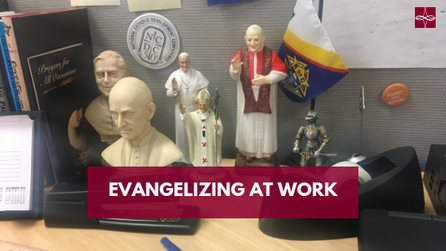

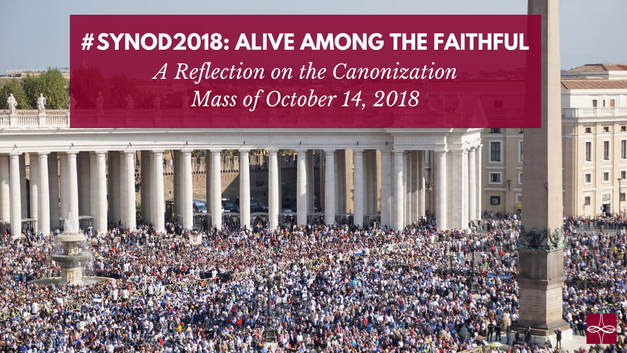
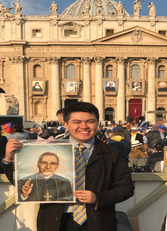
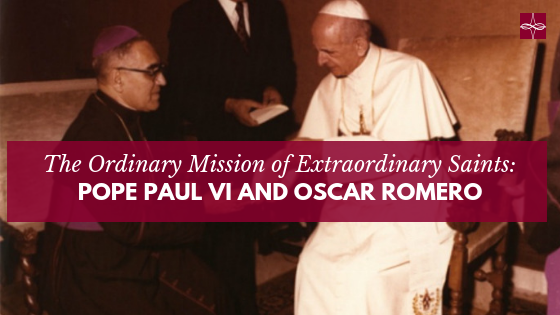



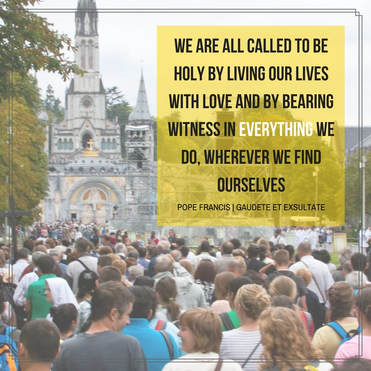
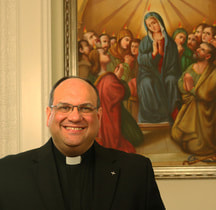


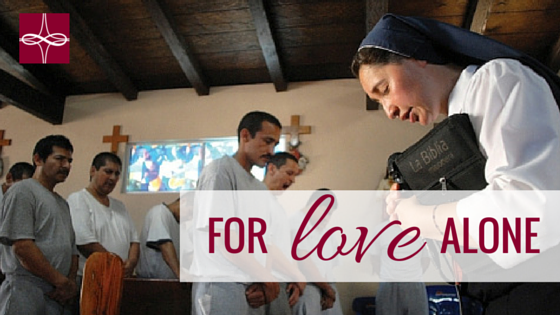
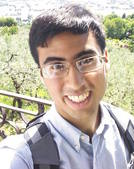
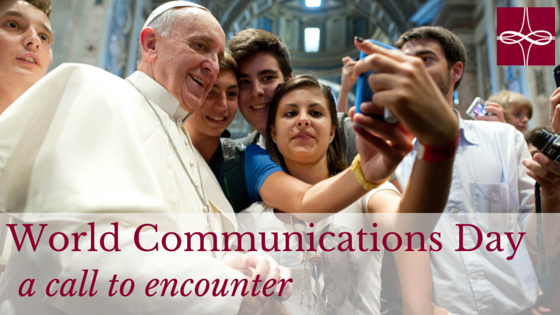

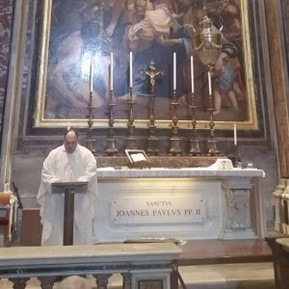
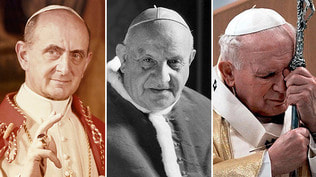


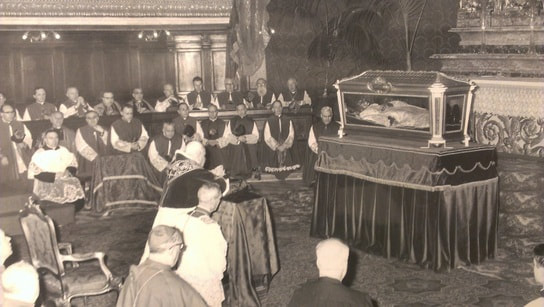
 RSS Feed
RSS Feed